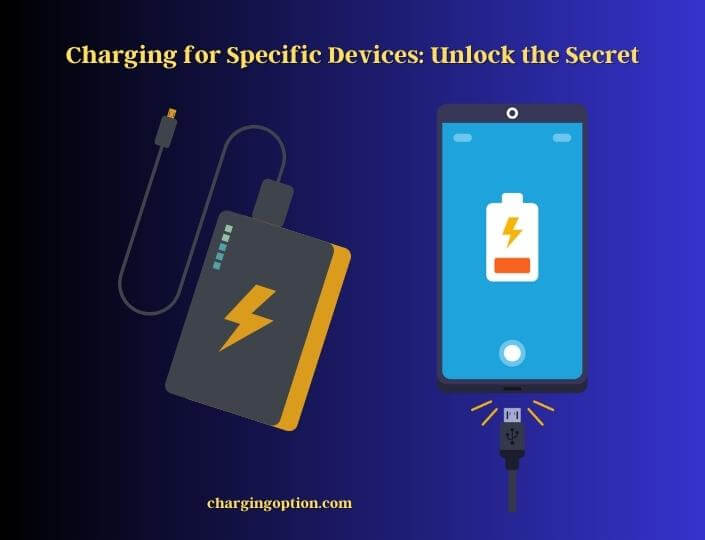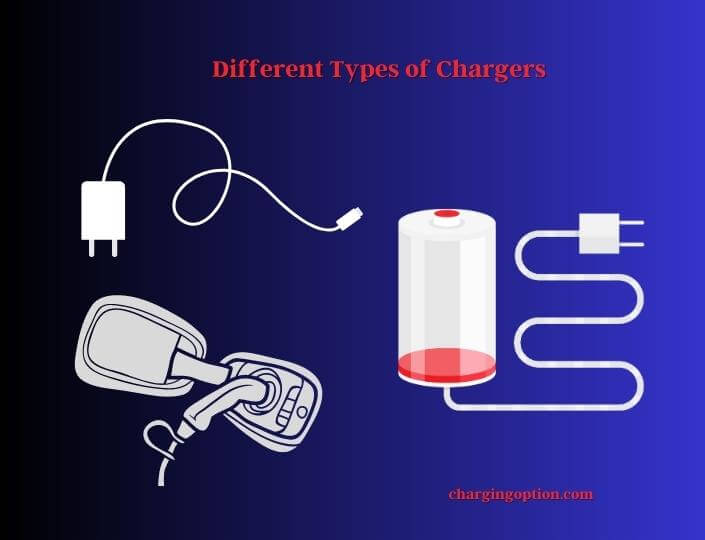In today’s fast-paced world, we rely heavily on our electronic devices to stay connected with the world around us. From smartphones and laptops to tablets and wearables, these devices have become an integral part of our daily lives. With increased usage comes the need for proper charging to ensure that our devices continue to function optimally.

There are different types of chargers available in the market, each with its own set of advantages and disadvantages. USB chargers are the most common and popular chargers, while wireless chargers and wall chargers are also gaining popularity.
Charging specific devices with the wrong charger can lead to some issues, such as reduced battery life, slower charging times, and even device damage. Therefore, it is important to choose the right charger for your specific device to ensure that it is charged properly and safely.
Different Types of Chargers
There are several different types of chargers available for specific devices, each with its advantages and disadvantages.

Wall Chargers
Wall chargers are the most common type of charger and plug into a wall outlet. They typically come with a USB port or a charging cable that connects to the device. Wall chargers are convenient for charging at home or in an office and come in various power outputs.
Car Chargers
Car chargers plug into the car’s cigarette lighter or power outlet and typically come with a USB port or a charging cable that connects to the device. They are convenient for charging on the go while driving and come in various power outputs.
Portable Chargers
Portable chargers, also known as power banks, are battery-powered chargers that can be used to charge devices while on the go. They come in various capacities and can charge devices multiple times before needing to be recharged themselves.
Wireless Chargers
Wireless chargers use electromagnetic induction to charge devices without the need for a charging cable. They are convenient for charging compatible devices, such as some Apple and Android devices, and can eliminate the need for multiple charging cables.
Solar Chargers
Solar chargers use solar panels to convert sunlight into electricity and charge devices. They are convenient for outdoor activities and for charging devices in areas without access to power outlets. They may not be as effective in low light or cloudy conditions.
Charging Specific Devices
Apple Devices
Apple devices have specific charging requirements, and it is important to use the right charger to ensure that your device is charged properly and safely. Apple devices use a proprietary Lightning connector for charging, and older devices use a 30-pin connector. However, newer Apple devices such as the iPhone 12 now use USB-C for charging.
When it comes to Apple devices, it is recommended to use an Apple-branded charger or a third-party charger that is MFi (Made for iPhone/iPad/iPod) certified. These chargers are designed specifically for Apple devices and meet Apple’s standards for safety and performance.
Android Devices
Android devices, on the other hand, use a variety of charging ports, including Micro-USB, USB-C, and proprietary connectors. Each device may have different charging requirements, so it is important to check the device’s manual or specifications to determine the right charger.
When it comes to third-party chargers for Android devices, it is recommended to choose a charger that is compatible with the device’s charging port and provides the required power output. Many Android devices support fast charging, which allows for quicker charging times, so it is important to choose a charger that supports fast charging if your device is capable of it.
Other Devices
Other devices, such as cameras, gaming devices, and e-readers, may have their own unique charging requirements. It is important to check the device’s manual or specifications to determine the right charger.
In general, it is recommended to choose a charger that provides the required power output for the device and is compatible with the device’s charging port. If the device supports fast charging, it is also recommended to choose a charger that supports fast charging for quicker charging times.
When it comes to third-party chargers for other devices, it is important to choose a charger from a reputable brand that meets safety and performance standards. Cheap, low-quality chargers may not provide the required power output or may be unsafe, which can lead to device damage or even injury.
Choosing the Right Charger
When it comes to charging specific devices, choosing the right charger is essential for safe and optimal charging. Using the wrong charger can damage the device or even pose a risk of fire or injury.
Check the Device’s Manual or Specifications
The device’s manual or specifications will list the recommended charger and power output. Make sure to choose a charger that matches the device’s requirements.
Choose a Charger From a Reputable Brand
Cheap, low-quality chargers may not provide the required power output or may be unsafe, which can lead to device damage or even injury. Choose a charger from a reputable brand that meets safety and performance standards.
Look for Certification
Look for chargers that are certified by the relevant organizations, such as MFi (Made for iPhone/iPad/iPod) for Apple devices or USB-IF (USB Implementers Forum) for USB-C devices. These certifications ensure that the charger meets safety and performance standards.
Consider the Power Output
The power output of the charger determines how quickly the device will charge. Make sure to choose a charger with the right power output for your device. It is important to note that using a charger with a higher power output than the device’s recommended maximum can be dangerous and may cause damage to the device or even pose a risk of fire.
Choose a Charger With Additional Features
Some chargers come with additional features, such as fast charging or multiple ports, that can be useful for charging multiple devices at once or for quick charging times.
Can the Tips and Tricks for Charging Multiple Devices also Apply to Specific Devices?
When it comes to charging multiple devices efficiently, the same tips and tricks can often apply to specific devices as well. By using a high-powered multi-port charger or a charging station, you can ensure that each of your specific devices receives the power it needs without sacrificing speed or performance.
Final Thought
Charging specific devices can be a confusing task, especially with the wide variety of charging ports and requirements for different devices.
For Apple devices, it is important to use the right charger with the right power output and to avoid using cheap, low-quality third-party chargers. Using wireless charging pads can be a convenient and safe option for charging compatible Apple devices.
For Android devices, it is important to choose a charger that is compatible with the device’s charging port and provides the required power output. Avoiding extreme temperatures and avoiding device usage during charging can also help ensure safe and optimal charging. It is also important to choose a charger from a reputable brand that meets safety and performance standards.
When it comes to choosing the right charger for any device, it is important to check the device’s manual or specifications, choose a charger from a reputable brand with certification, consider the power output, and choose a charger with additional features if needed.
